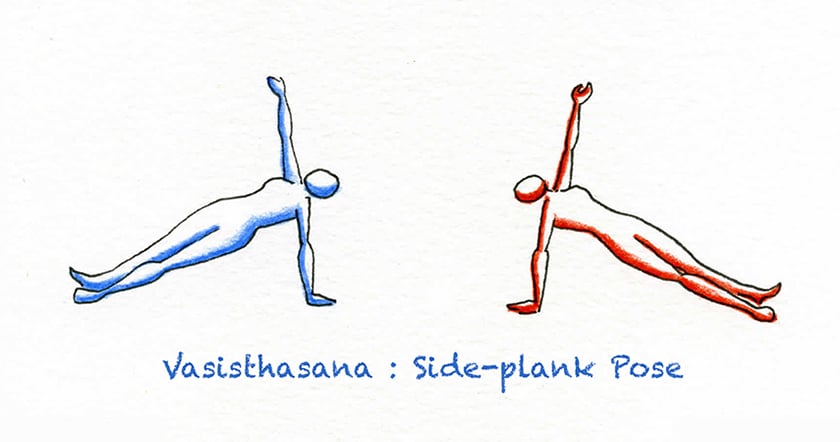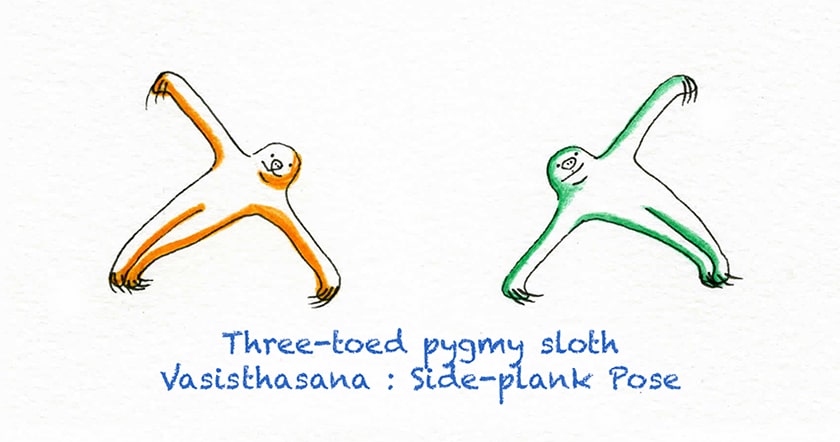illustrations ©2021 Joyce Borenstein
research references Wikipedia

Vasisthasana is the name for Plank Pose. This pose strengthens the arms and core. The variant is side-plank: balancing on one arm, the other reaching triumphantly straight up into the air, conveying the pride and joy of balancing on one arm and one leg.
According to Wikipedia, legend has it that Vasistha (Sanskrit for excellent) was the inventor of the Vasisthasana Pose. He was amongst the oldest and most revered pre-Buddha sages. He wrote many texts in verse on all topics and is the subject of many legends such as Vasistha and His Divine Cow Kamadhenu who could grant his owner any wish.
Vasistha wrote a medieval era encyclopedia composed between the 7th century and the 11th century, consisting of 383 chapters. Vasistha appears often in historical Hindu texts, representing a character who mediates conflicts and builds bridges between opposing ideologies. He is described as having long hair neatly tied at the back, a beard, a moustache and a tilak on his forehead (a marking made from sandalwood paste).

This pygmy three-toed sloth, Bradypus Pygmaeus, is seemingly vaunting his accomplishments as he mimics yoga practitioners in Side-plank Pose (Vasisthasana).
Of note: the pygmy sloth is native to a small island off of Panama, Isla Escudo de Veraguas. It lives in the mangrove trees that line the Island’s shores. It is known for its very slow movements and its great swimming ability. Green algae grow symbiotically on its fur, and this camouflages the sloth within the foliage. Its tough hide, strong grip and remarkable resilience for healing, all contribute to its survival, although habitat destruction is a threat.
Having seen the photo of the pygmy sloth in Side-plank Pose, my Vasisthasana Pose is forever changed. When I assume this pose, I chuckle to myself, because I think of the above photo.
No doubt that Vasistha would have also enjoyed the photo.

